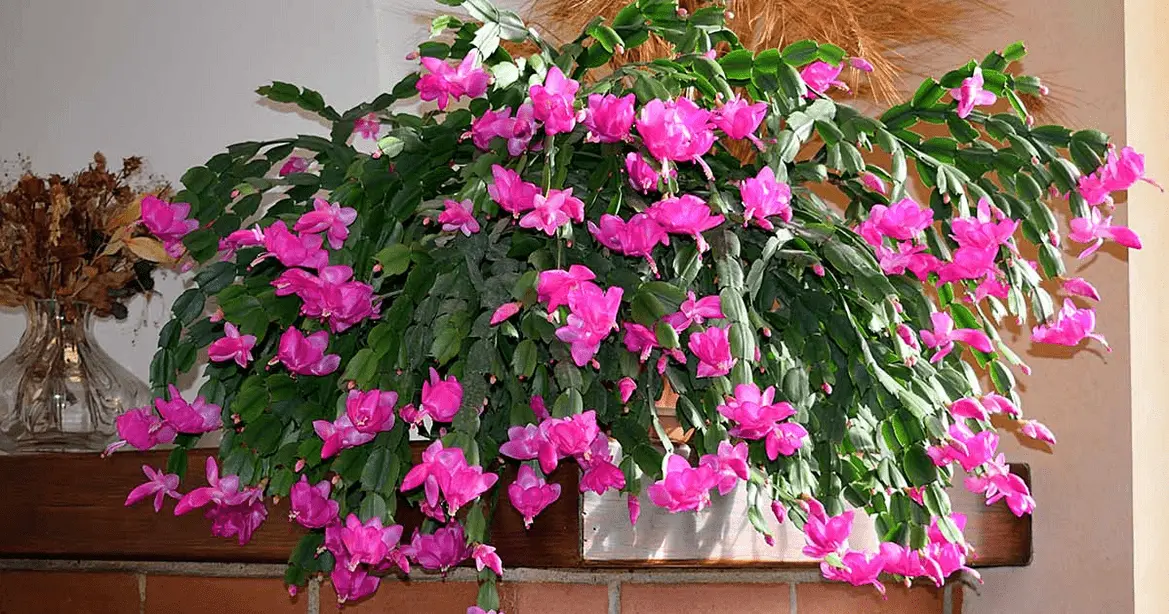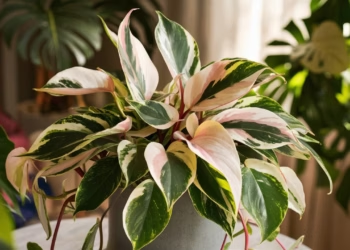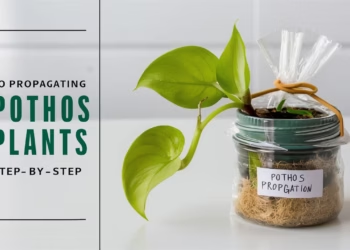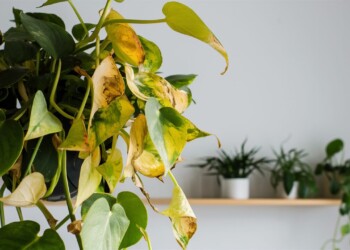Welcome to our comprehensive guide to Christmas cactus care and cultivation. In this detailed article, we’ll explore everything you need to know to ensure your Christmas cactus thrives and blooms beautifully, from its origin and ideal growing conditions to propagation, pruning, common problems, and more. Whether you’re a seasoned plant enthusiast or a beginner looking to cultivate a stunning holiday centerpiece, this guide has you covered.
Getting to Know Your Christmas Cactus
So, you’ve got yourself a Christmas cactus, huh? Well, before we dive into the nitty-gritty of care, let’s take a moment to acquaint ourselves with this unique plant.
- What is a Christmas Cactus?
- Contrary to its name, the Christmas cactus isn’t actually a cactus at all! It’s a member of the Schlumbergera genus, native to the coastal mountains of Brazil.
- These tropical beauties are renowned for their segmented, leaf-like stems and stunning blooms that typically appear around the holiday season.
- Why is it Called a Christmas Cactus?
- Good question! The name “Christmas cactus” stems from its tendency to bloom around the Christmas period in many parts of the world, adding a festive touch to any home.
- Varieties of Christmas Cactus: Christmas cacti come in various species and hybrids, each with its unique characteristics and blooming patterns. The three primary types include:
- Thanksgiving Cactus (Schlumbergera truncata): Known for its showy flower colors and pointed leaf projections, this variety typically blooms close to the end of November, adding a festive touch to the holiday season.
- Christmas Cactus (Schlumbergera russelliana): Characterized by its magenta and white flowers and flattened leaf segments, this species blooms around the end of December, coinciding with the Christmas festivities.
- Easter Cactus (Rhipsalidopsis gaetneri): With star-shaped flower buds that appear in February and blooming throughout March to May, this variety adds a splash of color to the spring season, earning its name from its blooming period.

Essential Care Tips – xmas cactus care
Now that we’ve acquainted ourselves with our prickly friend, it’s time to delve into the essential care tips to ensure it thrives indoors.
Light and Location: Where to Place Your Cactus
Finding the perfect spot for your Christmas cactus is crucial for its well-being. Here’s what you need to know:
- Bright Indirect Light: Christmas cacti thrive in bright, indirect light. Aim for 4 to 6 hours of diffused light daily, particularly during the winter bloom months. While the plant enjoys both sun and shade, avoid exposing it to excessive sunlight, especially during the spring and summer months, as it may cause the plant to become pale or yellow.
- Ideal Locations: Opt for a spot near a north or east-facing window where your cactus can soak up plenty of gentle sunlight without the risk of sunburn.
Soil
When it comes to soil, Christmas cacti are relatively adaptable but thrive best in a well-drained, loamy, sandy, or perlite-rich mix. Consider using a cactus mix or general-purpose potting soil with a pH level between 5.5 and 6.2. Peat moss can be added to create a more acidic environment, promoting optimal growth and health.

Watering Wisely: How Much and How Often?
Watering your Christmas cactus can be a bit of a balancing act. Here’s how to get it just right:
- Moist, Not Soggy: Aim to keep the soil consistently moist but not waterlogged. Overwatering can lead to root rot, while underwatering can cause the stems to shrivel.
- Watering Frequency: During the growing season (spring and summer), water your cactus whenever the top inch of soil feels dry to the touch, two to three times a week. In winter, reduce watering to once every one to three week, to allow the plant to enter dormancy.
Temperature and Humidity: Creating the Perfect Environment
Creating the ideal temperature and humidity levels will help your Christmas cactus thrive. Here’s what to keep in mind:
- Moderate Temperatures: Christmas cacti prefer temperatures between 60°F to 70°F (15°C to 21°C) during the day and slightly cooler temperatures at night (55°F to 65°F).
- Humidity: These tropical beauties appreciate moderate humidity levels. To boost humidity, consider placing a tray of pebbles filled with water beneath the plant or using a humidifier.
Fertilizing: Feeding Your Festive Friend
While Christmas cacti aren’t heavy feeders, they do benefit from occasional fertilization during the growing season:
- Frequency: Feed your cactus with a balanced, water-soluble fertilizer diluted to half strength every 4-6 weeks during the growing season.
- Avoid Overfertilizing: Be cautious not to overfertilize, as this can lead to salt buildup in the soil, causing root damage.
Troubleshooting Common Issues
Even the most attentive plant parents can encounter issues with their Christmas cactus. Here are some common problems and how to address them:
- Wilting or Shriveling Stems:
- Cause: Underwatering or exposure to extreme temperatures.
- Solution: Increase watering frequency and ensure the plant is situated in a suitable location with consistent temperatures.
- Yellowing or Dropping Leaves:
- Cause: Overwatering or insufficient light.
- Solution: Adjust your watering schedule and relocate the plant to a brighter spot with indirect sunlight.
- Failure to Bloom:
- Cause: Inadequate light or improper temperature conditions.
- Solution: Ensure your cactus is receiving enough bright, indirect light and maintain consistent temperatures between 60°F to 70°F (15°C to 21°C) to encourage blooming.

Pruning and Propagation
1. Pruning
Pruning your Christmas cactus is essential for maintaining its shape, promoting branching, and encouraging healthy growth. It’s best to prune the plant right after it blooms or during its new growth period. Simply twist or snip the stems between segments to remove excess growth and encourage bushier growth.
2. Propagation
Propagating your Christmas cactus is a rewarding way to expand your plant collection and share its beauty with others. The best time to propagate is one to two months after blooming, using stem cuttings with three to five segments. After preparing the cuttings, allow them to callous for a few days before planting them in a well-drained potting mix. With proper care and attention, the cuttings will develop roots and grow into healthy, thriving plants.

With the knowledge gained from this guide, you’re well-equipped to care for your Christmas cactus with confidence and finesse! Remember to provide ample bright, indirect light, water wisely, and maintain optimal temperature and humidity levels to keep your cactus thriving year-round. So go ahead, let your indoor oasis flourish with festive cheer, and may your Christmas cactus dazzle with blooms for many holiday seasons to come!
FAQs
Does Christmas cactus like sun or shade?
Christmas cacti prefer bright, indirect light. While they can tolerate some morning sun, they should be shielded from direct sunlight in the afternoon, especially during hot summer months. Placing them near a window where they can receive filtered sunlight or indirect light throughout the day is ideal .
How often do you water a Christmas cactus?
Water a Christmas cactus thoroughly when the top inch of the soil feels dry to the touch. Typically, this means watering every 1-2 weeks, but frequency may vary based on factors such as temperature, humidity, and the size of the plant. Avoid overwatering, as Christmas cacti are susceptible to root rot .
How to care for a Christmas cactus indoors?
To care for a Christmas cactus indoors, provide it with bright, indirect light, maintain a consistent watering schedule, and ensure well-draining soil. Keep the plant in a room with temperatures around 65-70°F (18-21°C) during the day and slightly cooler at night. Fertilize monthly during the growing season (spring and summer) and avoid placing the cactus near drafts or heating vents.
When should you put a Christmas cactus in the dark?
To encourage blooming, place a Christmas cactus in complete darkness for 12-14 hours per night, starting around mid-September until buds form. This process simulates the natural light conditions the plant would experience in its native habitat, triggering flower production. Once buds appear, you can move the cactus back to its usual location.
Is coffee good for Christmas cactus?
Coffee grounds can be used as a component in potting mix for Christmas cacti, as they provide acidity and organic matter that aids in soil drainage and nutrient absorption. However, avoid using coffee as a liquid fertilizer, as it may alter the soil pH and potentially harm the plant. It’s best to stick to a balanced water-soluble fertilizer specifically formulated for cacti and succulents.










